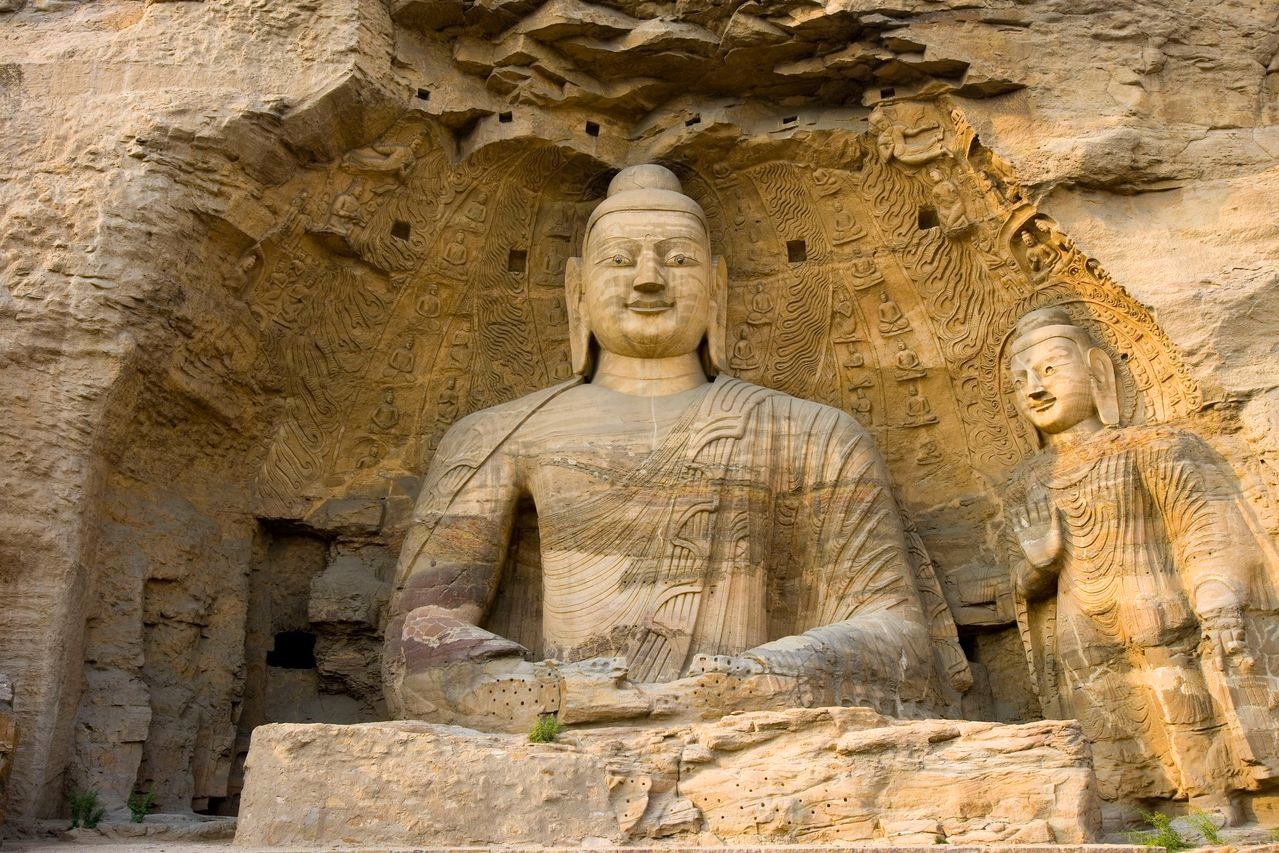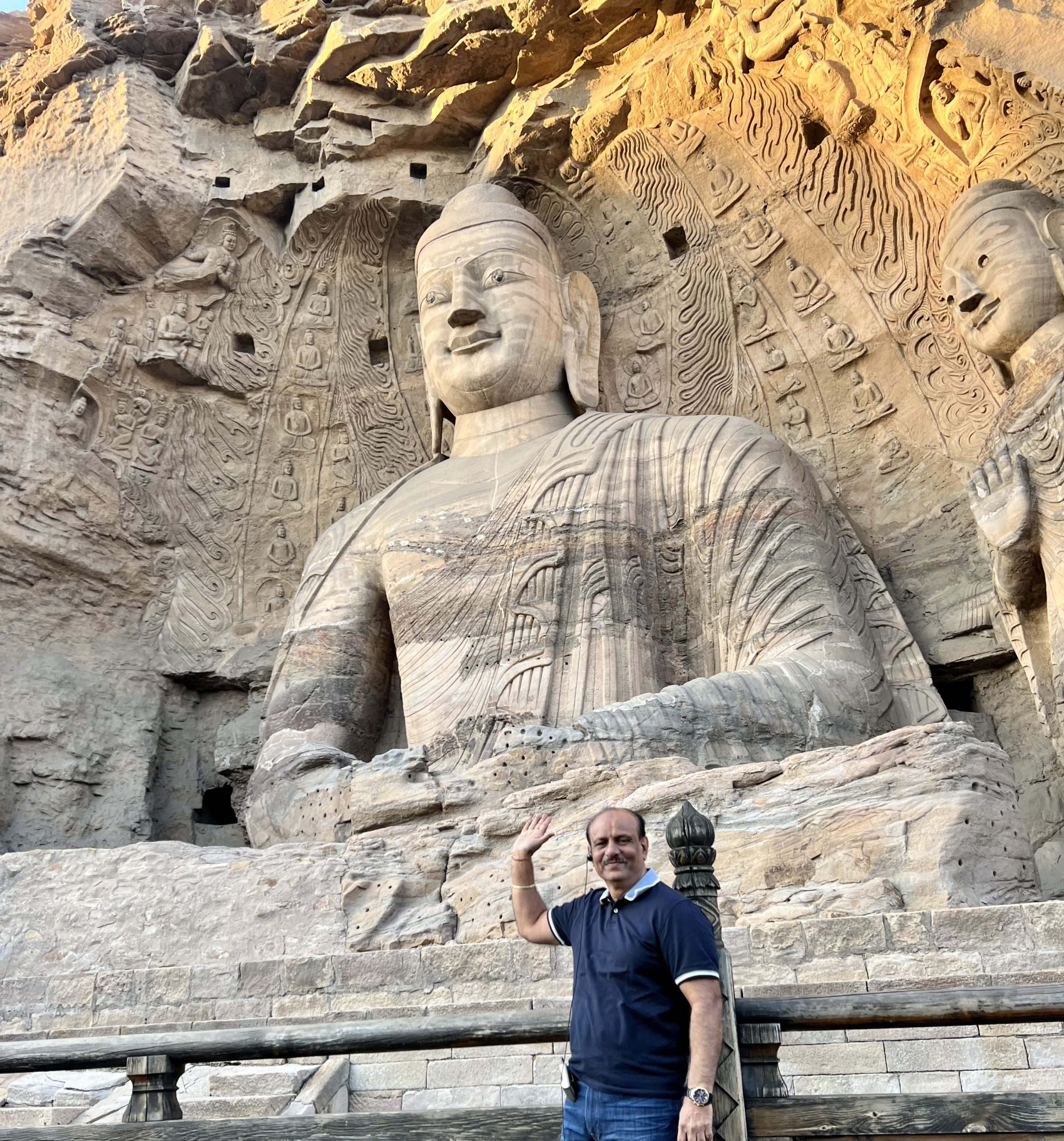By Mewati Sitaram
My recent visit to Shanxi Province made me feel on top of the world when I saw the most beautiful Buddha Grottoes, it was an lifetime memory to share with my family and countrymen.
Nestled in the heart of China’s Shanxi Province, the Yungang Grottoes stand as a testament to the rich cultural and artistic heritage of ancient China. Located near the city of Datong, this UNESCO World Heritage Site is a captivating destination that offers visitors a glimpse into the profound Buddhist art and history of the region. With its exquisite rock-cut sculptures and stunning landscapes, the Yungang Grottoes beckon tourists from around the world to explore the wonders of this extraordinary site.
The Yungang Grottoes, dating back to the 5th century, were commissioned during the Northern Wei Dynasty. This remarkable complex of Buddhist cave temples was created to promote Buddhism in the region. The grottoes served as places of worship, meditation, and artistic expression, showcasing the rich cultural exchange that took place along the Silk Road. One of the most striking features of the Yungang Grottoes is the extensive collection of over 51,000 Buddha statues and carvings, spread across 252 grottoes. These sculptures vary in size, from the monumental to the minute, and collectively represent the pinnacle of Chinese Buddhist art. Visitors are greeted with awe-inspiring images of bodhisattvas, Buddhas, and various celestial beings, each intricately detailed and exuding a sense of serenity and spirituality.
The grottoes are carved into the cliffs of the Wuzhou Mountain, and the architectural designs demonstrate the mastery of ancient Chinese artisans. The caves are divided into three main areas: the East Hill, West Hill, and Xiangshan Temple, each offering a unique glimpse into the evolution of Buddhist art and the passage of time. Preservation of the Yungang Grottoes is a testament to the dedication of the Chinese government and international organizations to safeguard cultural heritage. Conservation work has been ongoing for decades to protect the sculptures from environmental factors, such as erosion, air pollution, and even vandalism. As a result, visitors can explore these ancient treasures in a setting that closely resembles their original splendor.

Buddha statue at Yungang Grottoes (Photo Mewati Sitaram)
Visiting the Yungang Grottoes is not just an artistic experience; it’s also a spiritual journey. The serene atmosphere, the sound of cascading water, and the scent of incense create a sense of tranquility and contemplation. Many visitors find it a profound experience to walk through the dimly lit grottoes, observing the sculpted figures and understanding the stories they tell. While in Datong, tourists have the opportunity to explore more than just the Yungang Grottoes. The city also boasts other cultural and historical attractions, including the Huayan Monastery, the Nine-Dragon Wall, and the city’s ancient city walls, all of which provide a deeper understanding of the city’s rich history. Beijing and Datong are approximately 350 km apart. The introduction of high-speed and bullet trains shortened the travel time to 2 hours. There are plenty of hotels that offer comfortable stay.
The Yungang Grottoes, with their awe-inspiring sculptures and historical significance, remain a must-visit destination for travelers interested in Chinese culture, history, and art. This UNESCO World Heritage Site stands as a living testament to the enduring legacy of Buddhism and the remarkable artistic achievements of ancient China. A visit to the Yungang Grottoes is a journey back in time, a spiritual experience, and an opportunity to witness the artistic genius of the past.
My recent visit to Yungang Grottoes was organised by China Public Diplomacy Association (CPDA), I was stunned to see best preservation of ancient caves of its kind.

Editor in Chief : Mewati SItaram











